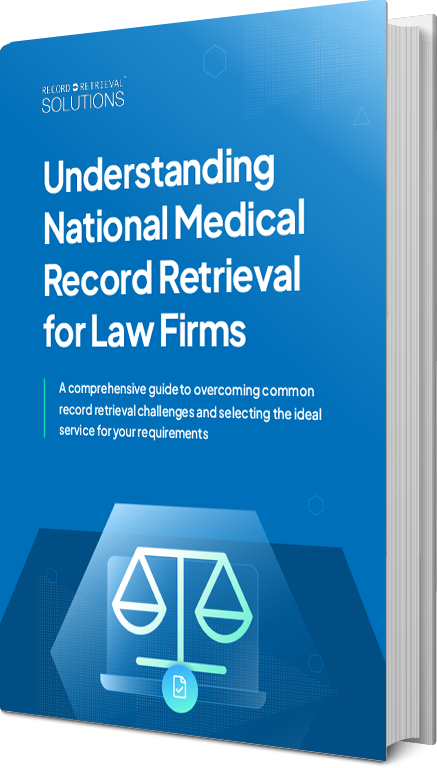The Direct Impact of Medical Record Staffing Shortages
The direct impact of medical record staffing shortages is profoundly felt across the healthcare spectrum, posing serious challenges to patient care, operational efficiency, and compliance standards. These shortages lead to inadequate patient care due to delays in updating and accessing critical medical histories, increasing the likelihood of errors in patient records which can result in misdiagnoses or inappropriate treatments. Moreover, the strain on existing staff not only decreases productivity but also heightens the risk of burnout and turnover, exacerbating the staffing crisis further. Financially, healthcare facilities face increased operational costs from overtime pay and the need for temporary staff, alongside potential fines for non-compliance with medical record-keeping regulations. Ultimately, the shortage of medical record staff creates a domino effect that compromises the quality of healthcare delivery, underscores the urgency of addressing the crisis, and calls for strategic solutions to mitigate its far-reaching consequences.
Inadequate Patient Care
Inadequate patient care is a significant consequence of staffing shortages in medical record departments, directly impacting the quality of healthcare services provided. The scarcity of personnel dedicated to managing and updating patient medical records results in delays and inaccuracies in the documentation that is essential for diagnosing and treating patients effectively. Medical professionals rely heavily on a patient’s medical history to make informed decisions regarding their care plan. Without timely access to accurate and comprehensive medical records, there is a substantial risk of misdiagnosis, inappropriate treatment recommendations, or missed opportunities for preventive measures, all of which can compromise patient health and safety.
Moreover, the ripple effects of these staffing shortages extend beyond the immediate implications for patient care. They contribute to a cycle of inefficiency within healthcare systems, where the time that could be spent on patient interaction and treatment is instead consumed by attempts to navigate incomplete or outdated medical records. This not only hampers the delivery of high-quality care but also erodes patient trust and satisfaction with healthcare services. In a sector where the precision of information can dictate the success of treatment outcomes, the importance of adequately staffed medical record departments cannot be overstated. Addressing these shortages is crucial for ensuring that healthcare providers can offer the level of care necessary to meet patient needs and uphold the standards of modern medical practice.
Increased Risk of Errors
The increased risk of errors in patient records is a direct consequence of staffing shortages in medical record departments, posing a significant threat to patient safety. Overworked and overwhelmed staff, striving to manage an unsustainable workload, are more susceptible to making mistakes in recording vital patient information. These errors can range from minor inaccuracies to critical omissions, each with the potential to significantly impact patient care outcomes. Incorrect or incomplete patient records can lead to misdiagnoses, inappropriate treatment plans, or delays in receiving necessary medical interventions. In the high-stakes environment of healthcare, where precision and accuracy are paramount, such errors underscore the urgent need for adequate staffing in medical record management to ensure the integrity of patient data and safeguard against preventable adverse events.
Delays in Treatment

Delays in treatment are a direct fallout of the staffing shortages in medical record departments, creating a bottleneck in the healthcare delivery process. When there are not enough trained personnel to efficiently handle the burgeoning volume of medical records, the timeliness of updating and accessing these critical documents suffers. Doctors and nurses, who depend on the most current medical records to make informed decisions, find themselves at a crossroads, unable to proceed with the urgency that patient care often demands. This lag not only hampers the healthcare provider’s ability to offer prompt and effective treatment but also prolongs the patient’s suffering and anxiety, potentially exacerbating health conditions. Addressing the staffing gap in medical record management is crucial to eliminating these unnecessary delays and ensuring that patients receive the timely care they need for optimal health outcomes.
Lowered Productivity
Lowered productivity within medical record departments is a significant repercussion of staff shortages, severely affecting the overall efficiency of healthcare services. When the team is understaffed, the remaining employees often find themselves overburdened with an increased workload, necessitating extended hours to keep up with the demands. This relentless pressure inevitably leads to fatigue, which not only diminishes the speed at which tasks are completed but also the quality of work produced. The meticulous nature of managing medical records — where accuracy is non-negotiable — suffers under these conditions. Errors become more likely, and the time required to rectify these mistakes further detracts from the department’s productivity. This cycle of overwork and decreased efficiency underscores the critical need for adequate staffing levels to maintain the high standards necessary for effective healthcare documentation and patient care.
Increased Costs
The scarcity of medical record staff forces hospitals and clinics to deploy measures that inadvertently inflate their operational costs. Resorting to overtime pay to compensate for the personnel deficit is a common practice among healthcare institutions grappling with this issue. While overtime may seem like a viable short-term solution to ensure continuity in medical record management, it imposes a hefty financial burden on the organization. The costs associated with overtime are significantly higher than regular wages and, when relied upon extensively, can drain the financial resources of a facility. This increased expenditure not only strains the budget but also diverts funds from other vital areas, such as patient care services, technology advancements, and essential medical supplies.
Furthermore, the financial implications of staff shortages extend beyond just overtime pay. Many healthcare organizations find themselves in a position where they must hire temporary or contract workers to fill the gaps in their medical record departments. These temporary staff often command higher wage rates compared to full-time employees, further escalating the operational costs. The cumulative effect of these increased expenses can adversely affect the overall financial stability of a healthcare organization, potentially leading to cutbacks in other important areas or even impacting the quality of patient care provided. Addressing the root cause of staff shortages and developing long-term strategies for staff retention and recruitment becomes crucial to controlling operational costs and safeguarding the financial health of healthcare facilities.
Negative Impact on Staff Morale
Staffing shortages within medical record departments exert a profound negative impact on staff morale, as the reduced workforce struggles to keep pace with the demanding workload. This constant pressure and stress can erode the job satisfaction of medical record staff, fostering a work environment fraught with frustration and fatigue. The psychological toll of feeling perpetually understaffed and overburdened can lead to a sense of helplessness and dissatisfaction among employees. As morale plummets, so does the quality of work life, making it increasingly difficult for staff to find fulfillment and motivation in their roles. This deteriorating morale is not just a matter of individual discontent; it can pervade the entire department, affecting team dynamics and the overall workplace atmosphere.

The repercussions of this decline in morale are far-reaching, potentially culminating in higher turnover rates. As staff members seek relief from the high-stress environment, the organization faces the loss of experienced personnel, further exacerbating the staffing crisis. This turnover not only incurs additional costs associated with recruiting and training new employees but also leads to a loss of institutional knowledge and continuity in patient care practices. The cycle of low morale leading to high turnover creates a challenging environment for both remaining and new staff, undermining efforts to build a stable and efficient team. Addressing the factors that contribute to low morale, through measures such as adequate staffing, recognition of employees’ efforts, and opportunities for professional development, is essential for fostering a positive work environment and retaining skilled personnel.
Compliance Issues
Compliance issues become increasingly prevalent in healthcare organizations grappling with limited staff, particularly in the realms of patient privacy and meticulous record-keeping. The stringent regulations governing these areas require a dedicated effort to maintain, an effort that is compromised when medical record departments are understaffed. The lack of sufficient personnel to ensure that all processes are carried out accurately and in a timely manner can lead to breaches in compliance, whether through inadvertent errors or delays in record management. Such non-compliance not only exposes healthcare providers to the risk of significant fines and penalties but also undermines patient trust and the integrity of the healthcare system. As regulatory bodies intensify their scrutiny of healthcare practices, the importance of addressing staffing shortages to safeguard compliance has never been more critical, underscoring the need for healthcare organizations to adopt proactive strategies to mitigate these risks.
Increased Workload and Burnout
The consequence of staffing shortages in medical record departments is not merely a numerical deficit but manifests profoundly through increased workload and burnout among the remaining staff. To bridge the gap left by the shortage, existing employees are often compelled to shoulder additional responsibilities, pushing them beyond their regular capacities. This escalation in workload leads to heightened levels of stress and physical exhaustion, diminishing job satisfaction and overall well-being. The relentless demand and the pressure to perform in an understaffed environment can precipitate burnout, a state of emotional, physical, and mental fatigue. This burnout not only affects the quality of work and the health of the employees but also contributes to higher turnover rates. As staff leave in search of better working conditions, the cycle of understaffing perpetuates, further destabilizing the department and exacerbating the challenges of maintaining a proficient and content workforce.

Moral Distress
Moral distress emerges as a significant concern among medical record staff facing understaffing issues, deeply affecting their professional and emotional well-being. This distress arises from the dissonance between the level of care they aspire to provide and what they are able to deliver under the constraints of a strained workforce. The inability to maintain the standards of care and accuracy they hold themselves to, coupled with witnessing the tangible impact of these shortcomings on patient experiences, can be profoundly demoralizing. Observing patients suffer from delays or inaccuracies in their medical records, which could potentially lead to adverse health outcomes, imbues staff with a sense of responsibility and guilt. This emotional toll not only affects their job satisfaction but also their mental health, contributing to a work environment where stress and dissatisfaction are prevalent. Addressing the root causes of understaffing and providing support mechanisms for staff can mitigate moral distress and help maintain a committed and resilient workforce.
Conclusion
The staffing shortages in medical record departments present a complex challenge with far-reaching consequences. From compromising patient care to straining financial resources, the impacts are profound and multifaceted. Addressing these shortages requires a concerted effort from healthcare organizations to invest in recruitment, training, and retention strategies, alongside leveraging technology to streamline medical record management. As we navigate the intricacies of healthcare delivery, the role of medical record departments remains pivotal, underscoring the need for adequate staffing to ensure the delivery of high-quality patient care and the sustainability of healthcare systems.







